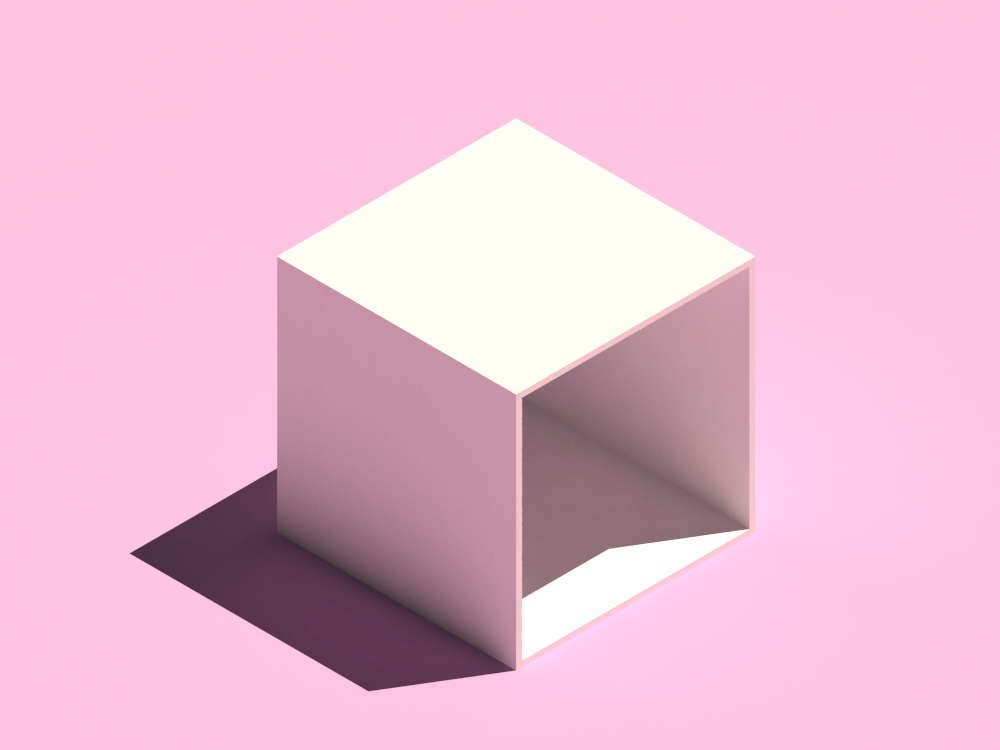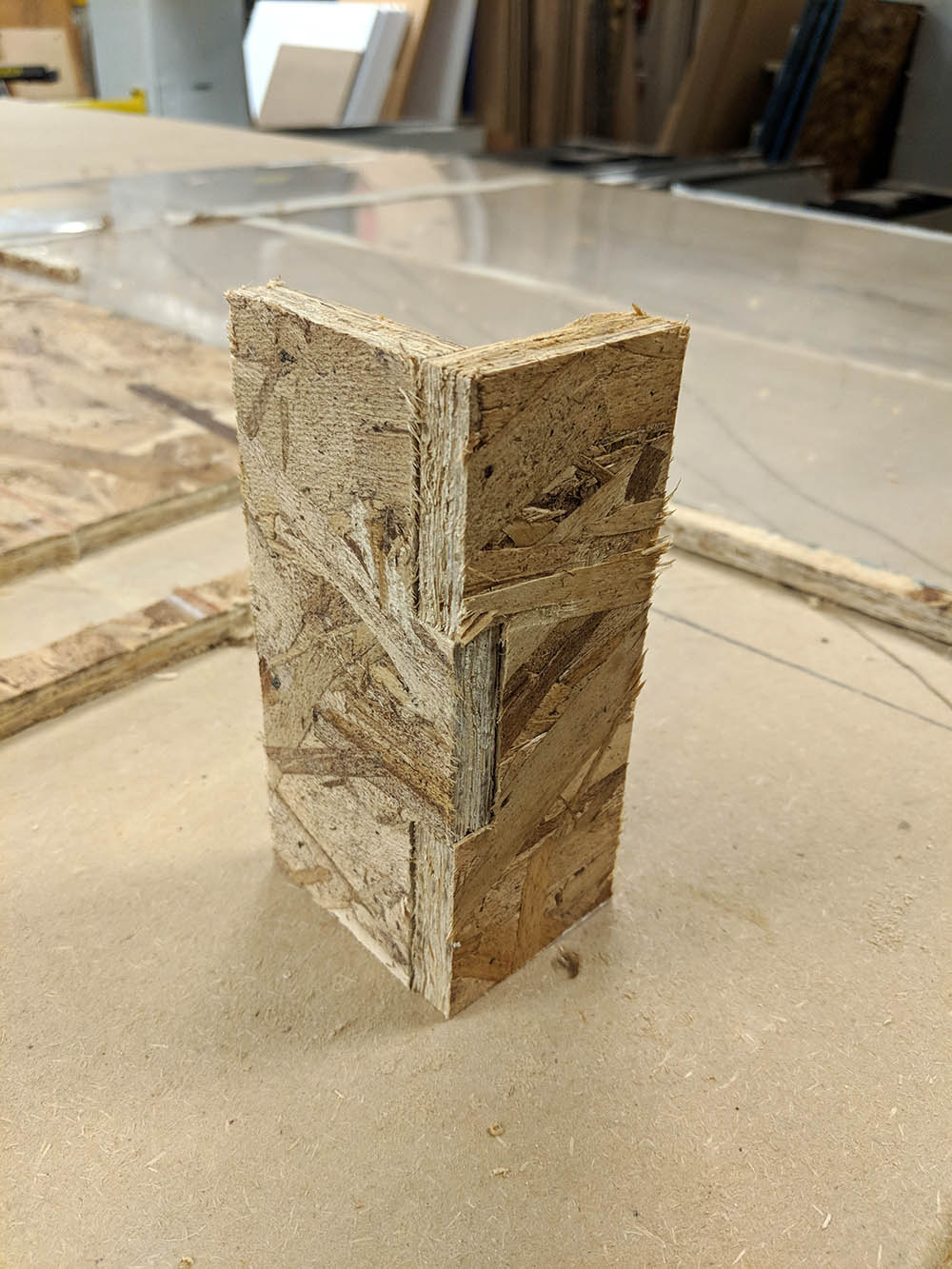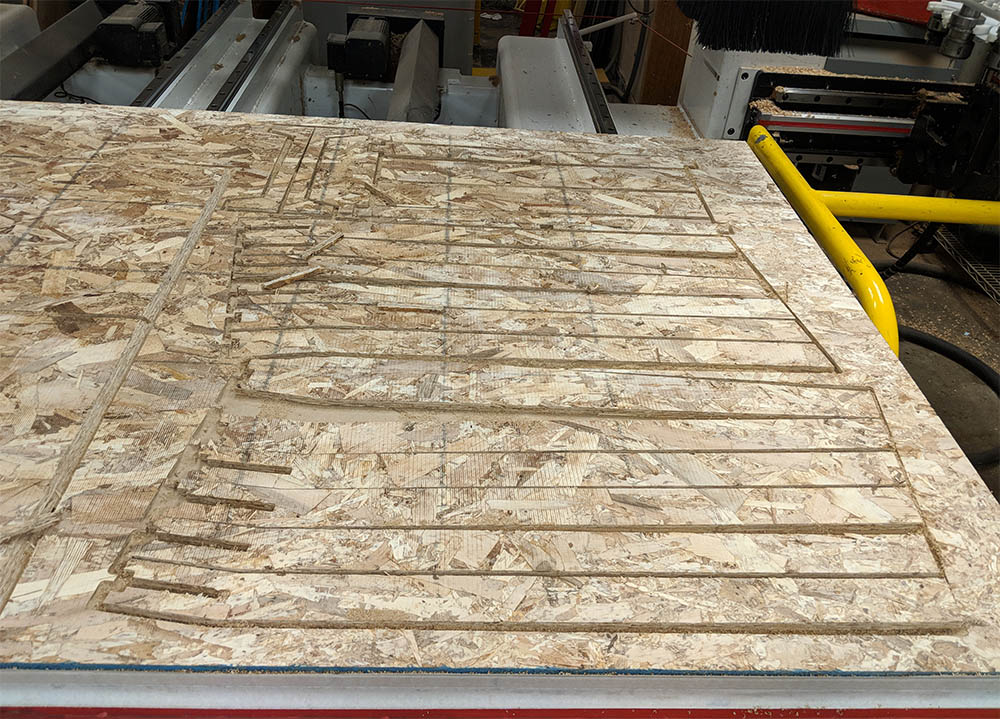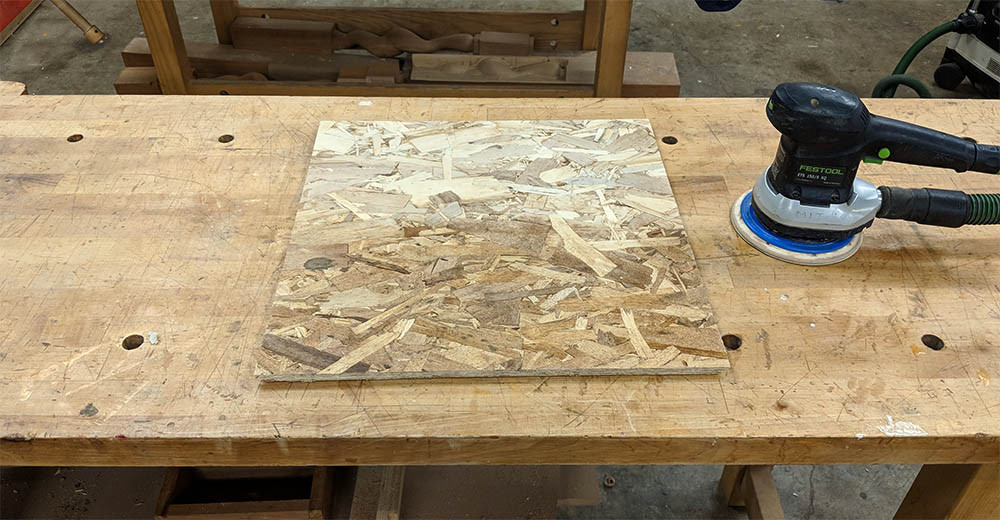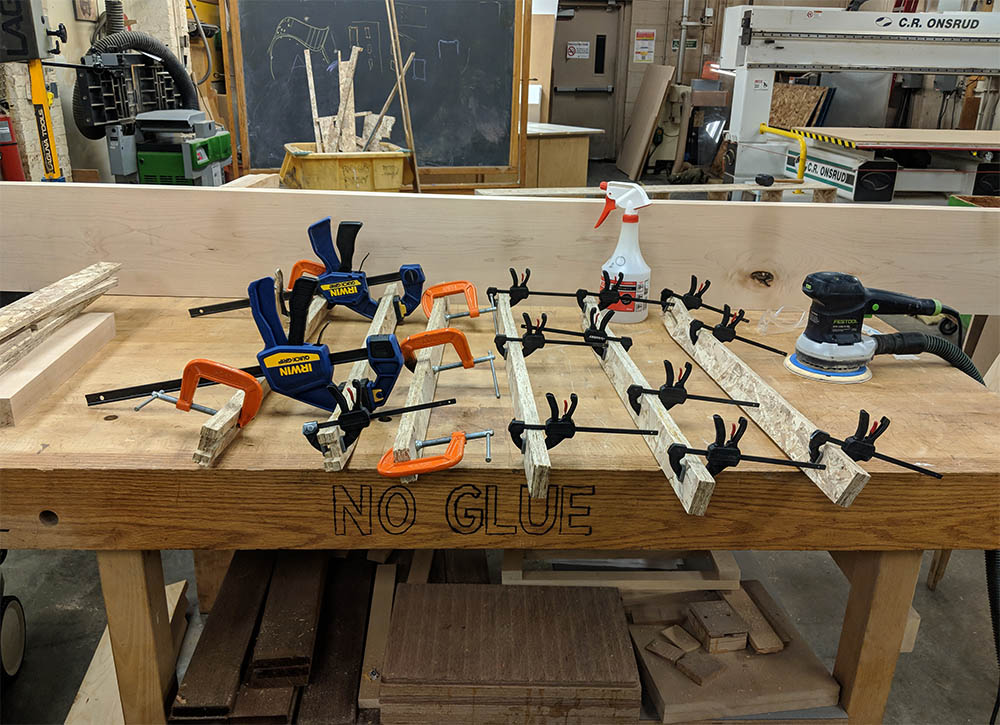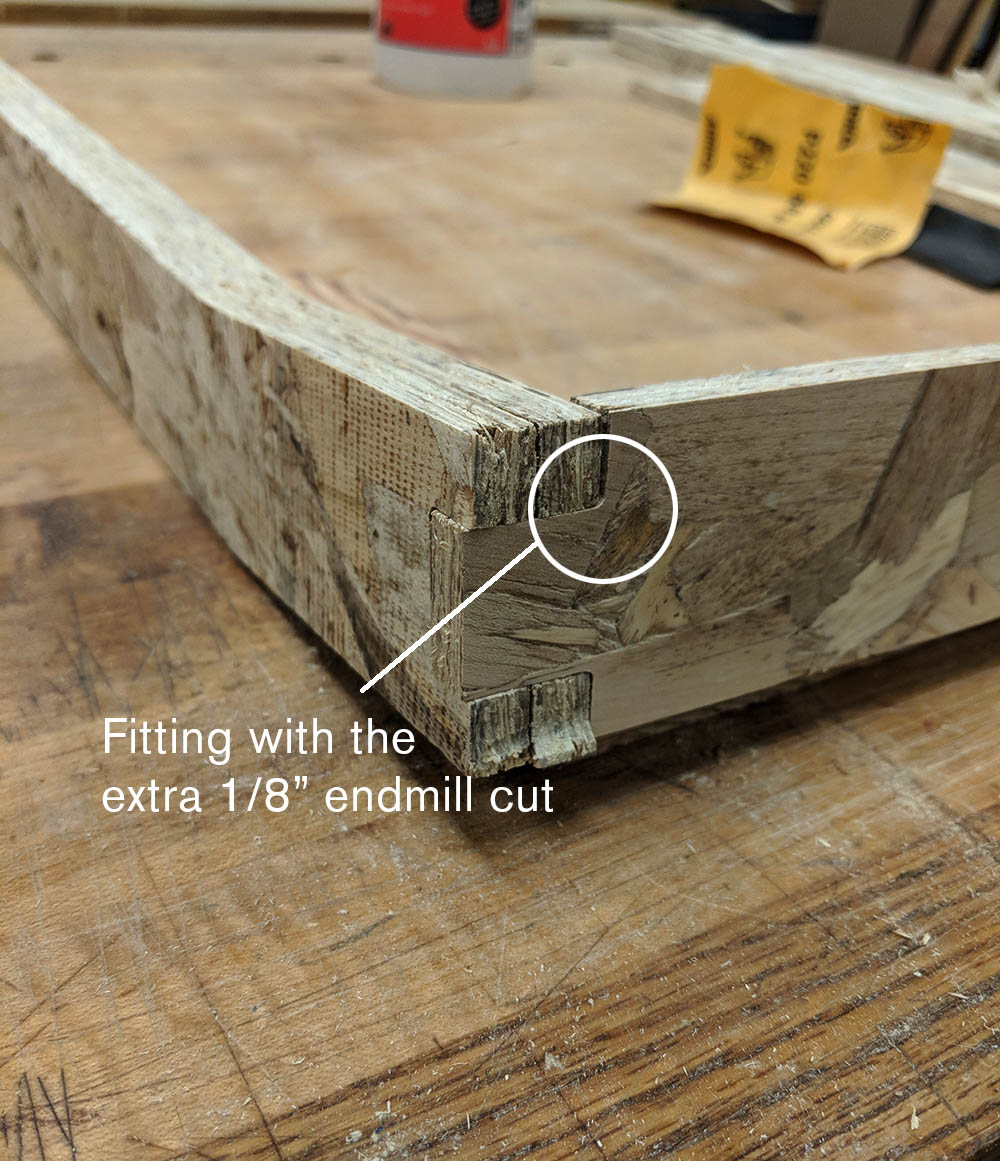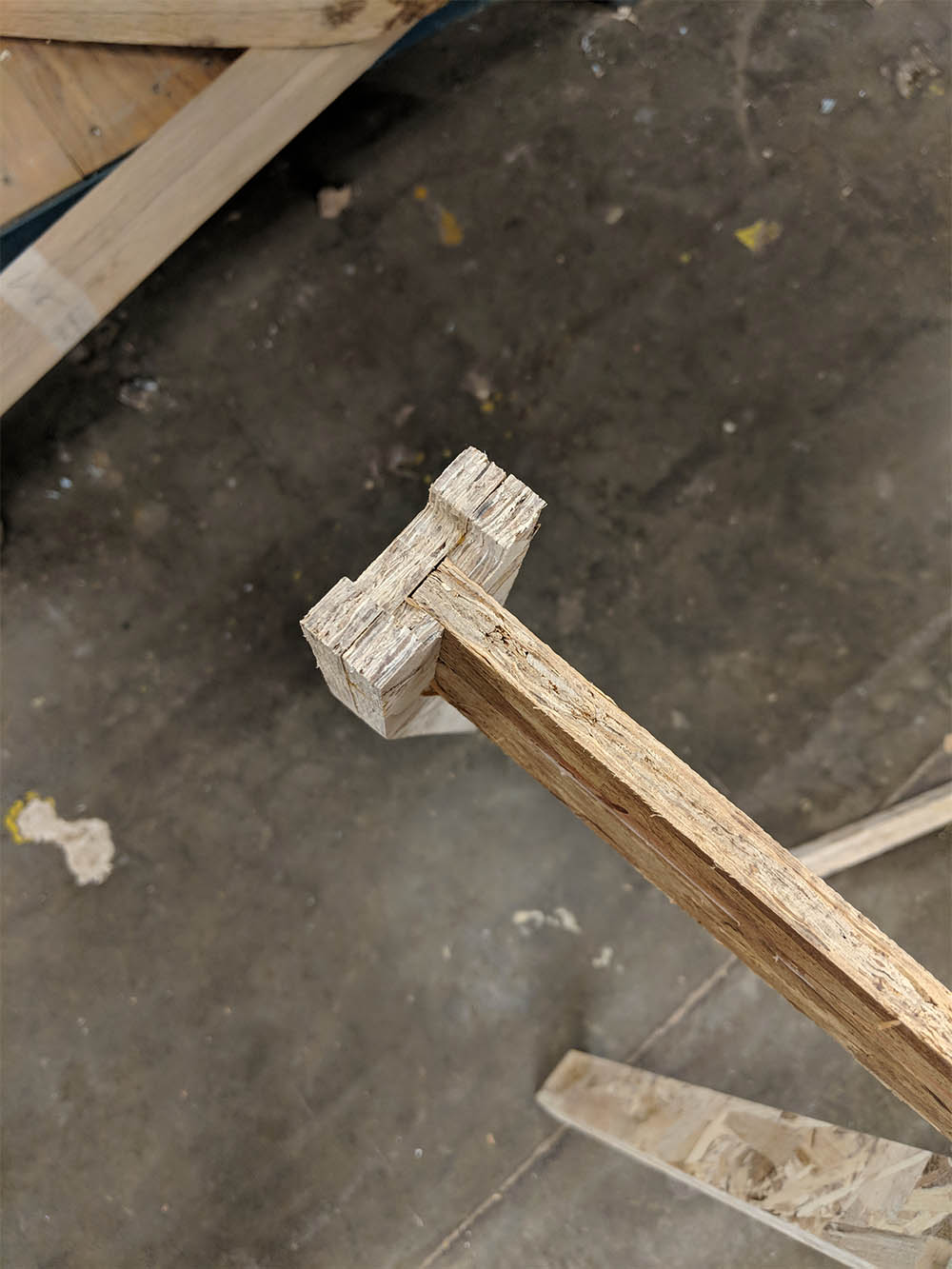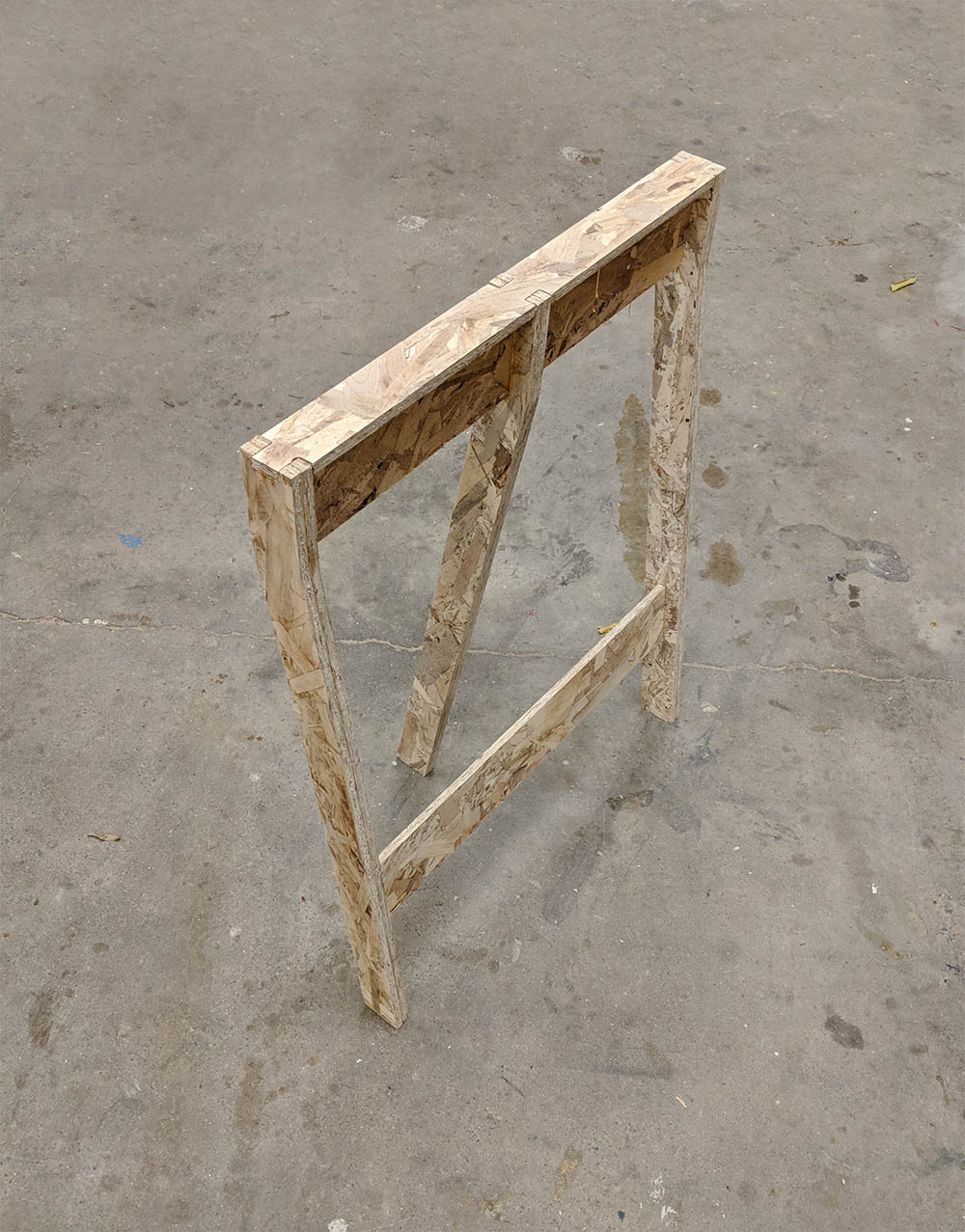Designing the impossible

Leg design iterations
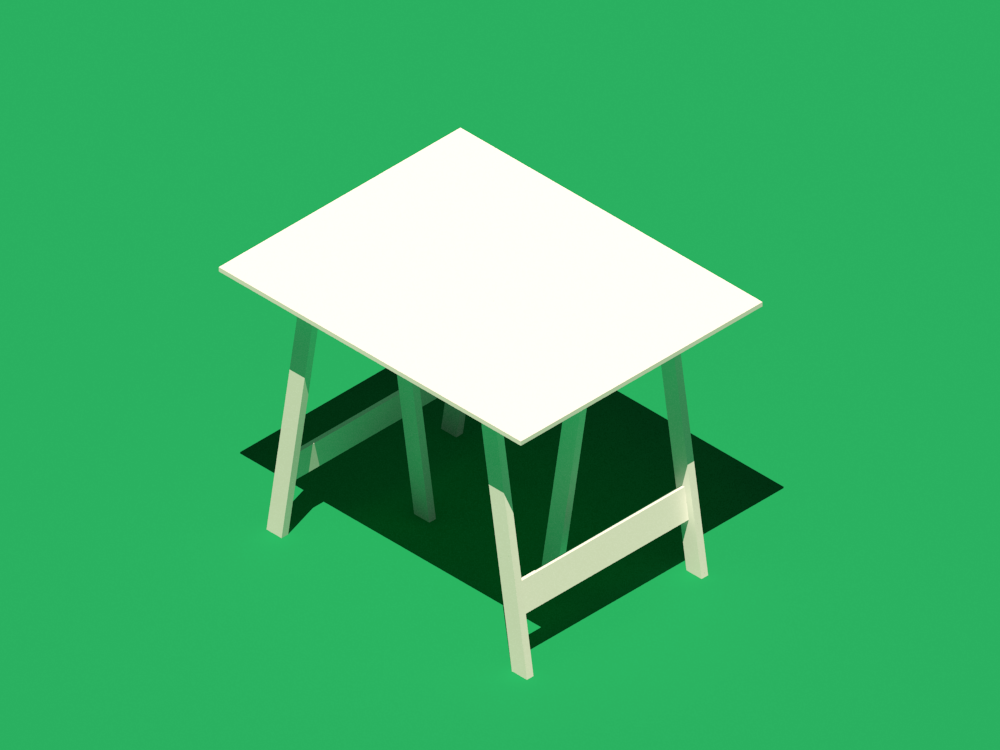
Final table
I am in the process of building a large (1:150) site model for my studio project in Chicago. We were only provided with MDF for the base (1/2" thick), and we had to buy / make our own legs. I thought I could maybe prototype possible legs for model stands that I could reuse in the future, and initially I also wanted to be able to easily disassemble, store, and reassemble them. (Site models every semester!)
I quickly realized that this was seriously wishful thinking. The structural properties of OSB are... not quite appropriate for a table. According to Chris Dewart, "the material has not much more structure than a cookie." The thing I had in mind, something like this Hay structure, was definitely not something OSB is good for, so I had to make many adjustments to my initial design. Big thanks to Jung for tips on how to make this work!!

Precedent from Hay
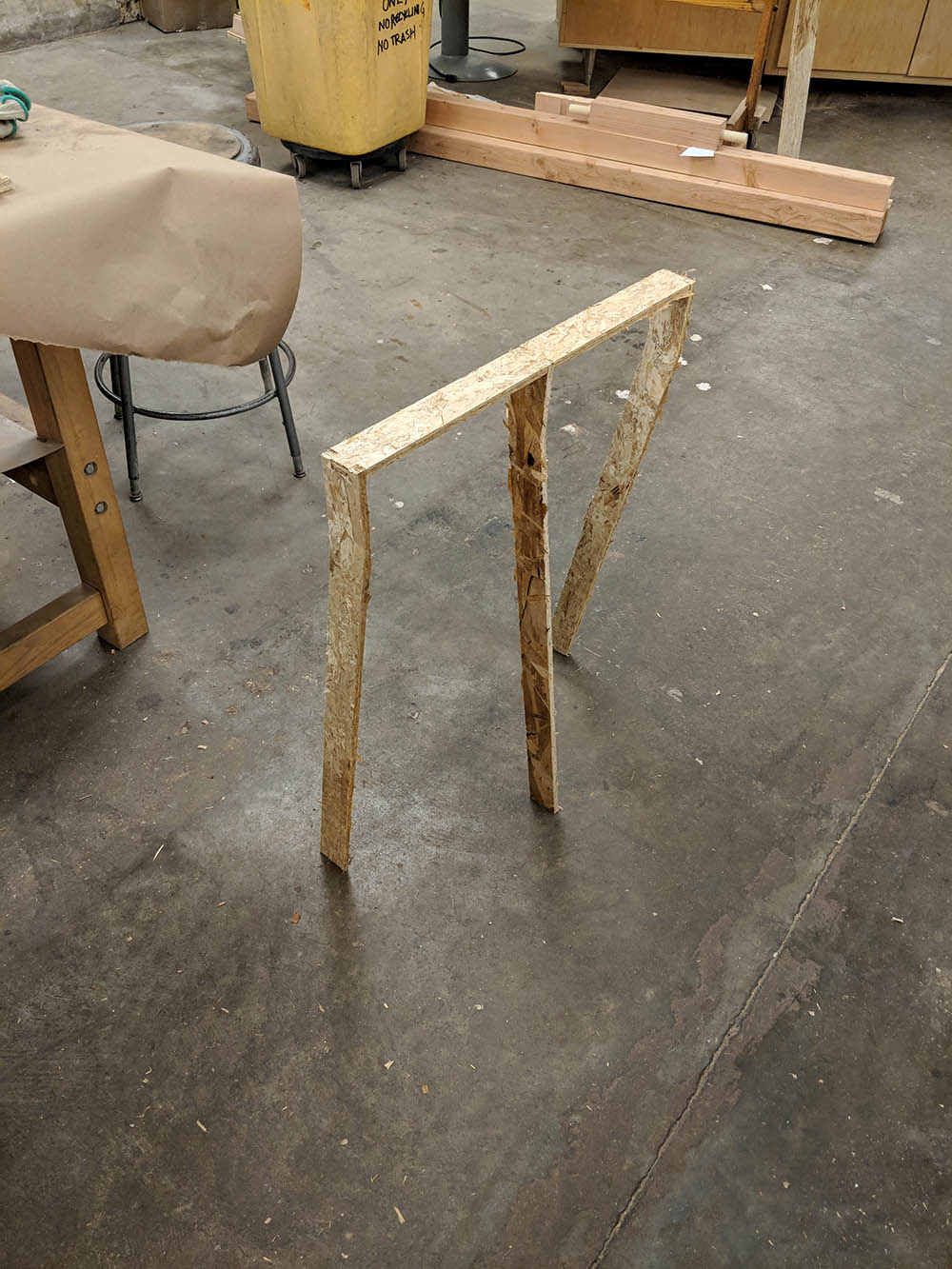
Testing the extremely flimsy leg assembly (& what was I thinking?)
I had to reinforce the simple & beautiful, but not-quite-suitable-for-wood design to make it stand & hold the weight of the MDF & that of my model.

Final vs initial leg design

Final vs initial leg design
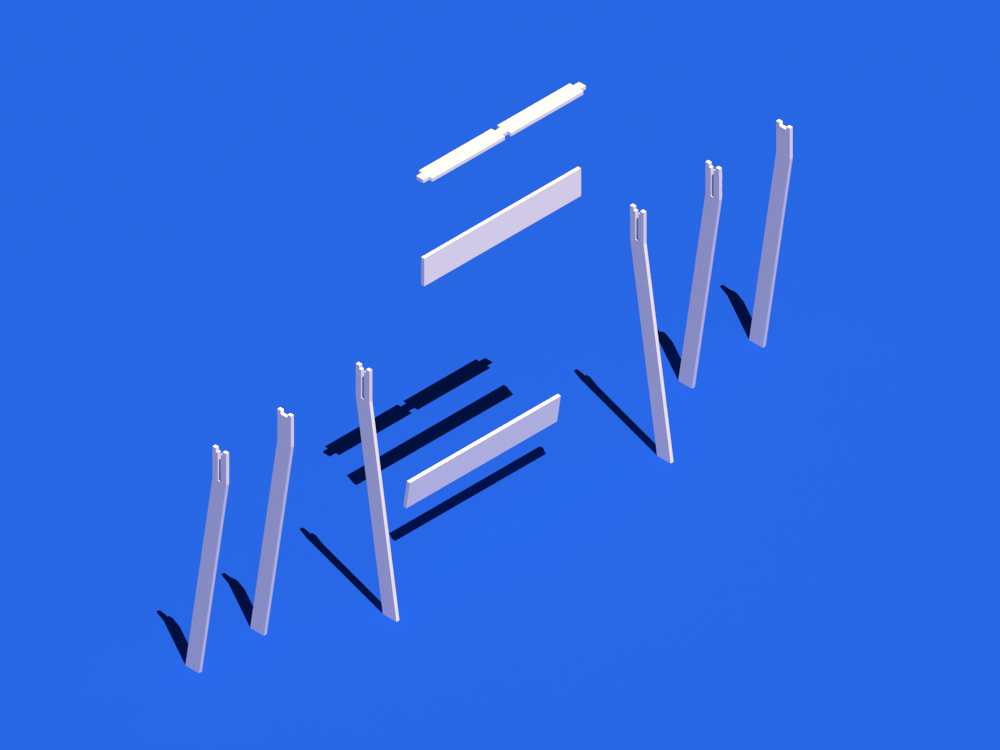
Exploded view of the final design
I doubled up the two sides, and I added an additional beam running across the two sides to the full depth of the straight section of the legs. Following Jung's advice, I also added a cross-beam on the bottom to better fix the rotation of the leg.

Dimensions of the final design
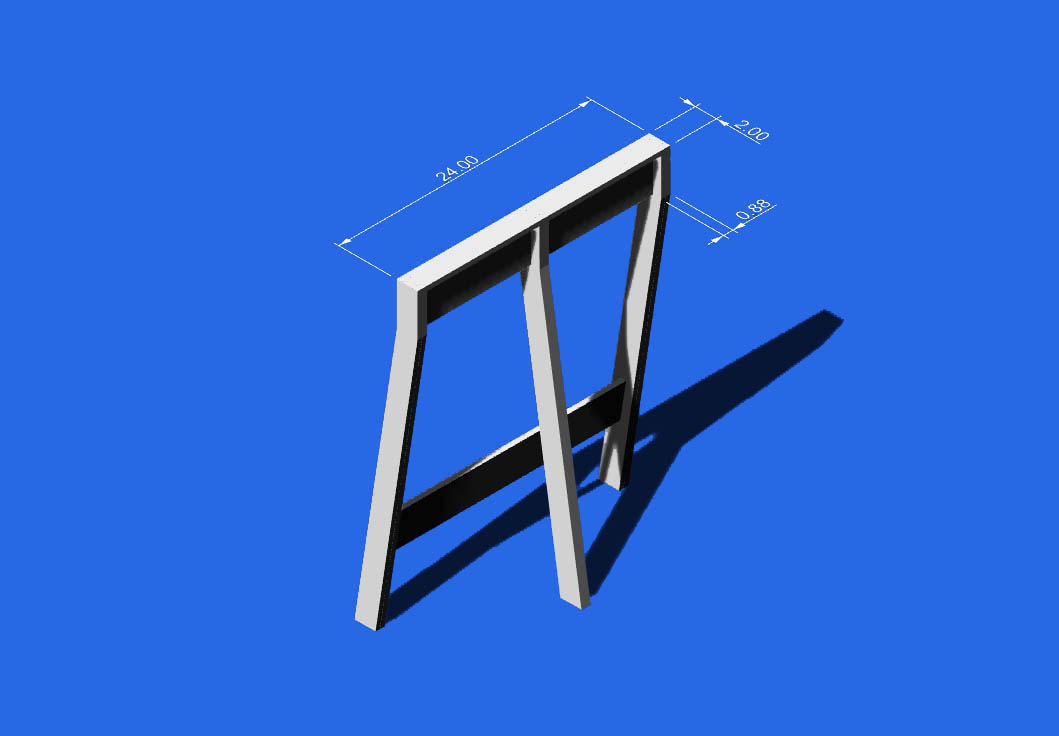
Dimensions of the final design
I also added a small mitered box to the sheet to not waste material, since I already had a 32"x40" sheet of MDF for my site model that we cut down on the tablesaw.
